Graph
Visit to download the full and correct content document: https://ebookmass.com/product/graph-database-and-graph-computing-for-power-syst em-analysis-renchang-dai/

More products digital (pdf, epub, mobi) instant download maybe you interests ...
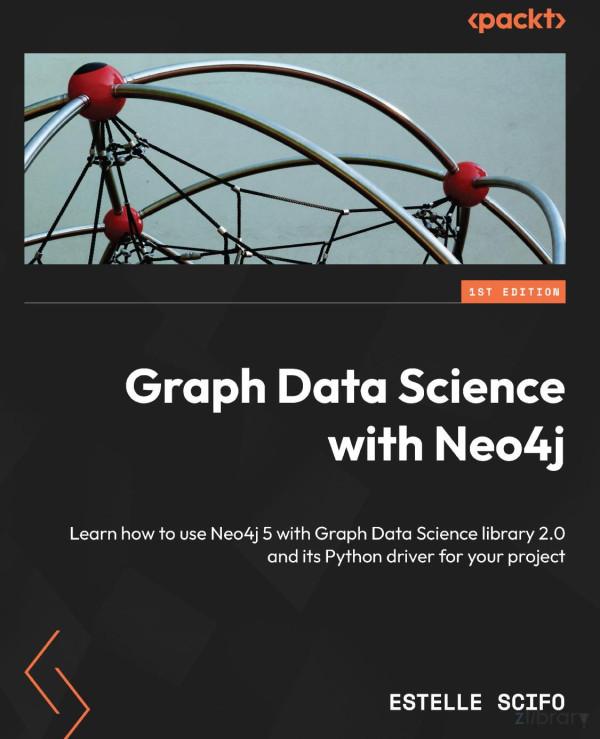
Graph Data Science with Neo4j: Learn how to use Neo4j 5 with Graph Data Science library 2.0 and its Python driver for your project Scifo
https://ebookmass.com/product/graph-data-science-withneo4j-learn-how-to-use-neo4j-5-with-graph-data-sciencelibrary-2-0-and-its-python-driver-for-your-project-scifo/
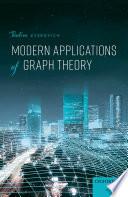
Modern Applications of Graph Theory 1st Edition
Zverovich
https://ebookmass.com/product/modern-applications-of-graphtheory-1st-edition-zverovich/

Graph Spectral Image Processing Gene Cheung
https://ebookmass.com/product/graph-spectral-image-processinggene-cheung/
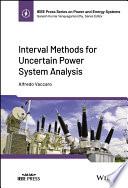
Interval Methods for Uncertain Power System Analysis
Alfredo Vaccaro
https://ebookmass.com/product/interval-methods-for-uncertainpower-system-analysis-alfredo-vaccaro/

Graph Data Science (GDS) For Dummies®, Neo4j Special Edition Amy Hodler
https://ebookmass.com/product/graph-data-science-gds-for-dummiesneo4j-special-edition-amy-hodler/

Fuzzy Graph Theory: Applications to Global Problems
John N. Mordeson
https://ebookmass.com/product/fuzzy-graph-theory-applications-toglobal-problems-john-n-mordeson/

Graph neural networks for efficient learning of mechanical properties of polycrystals Jonathan M. Hestroffer
https://ebookmass.com/product/graph-neural-networks-forefficient-learning-of-mechanical-properties-of-polycrystalsjonathan-m-hestroffer/

Power System Analysis and Design 6th Edition J. Duncan
Glover
https://ebookmass.com/product/power-system-analysis-anddesign-6th-edition-j-duncan-glover/
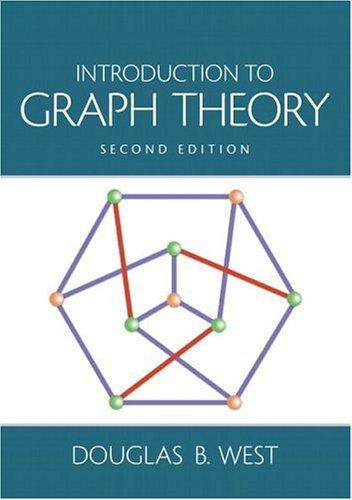
Introduction to Graph Theory 2, 2002 reprint Edition
Douglas B. West
https://ebookmass.com/product/introduction-to-graphtheory-2-2002-reprint-edition-douglas-b-west/
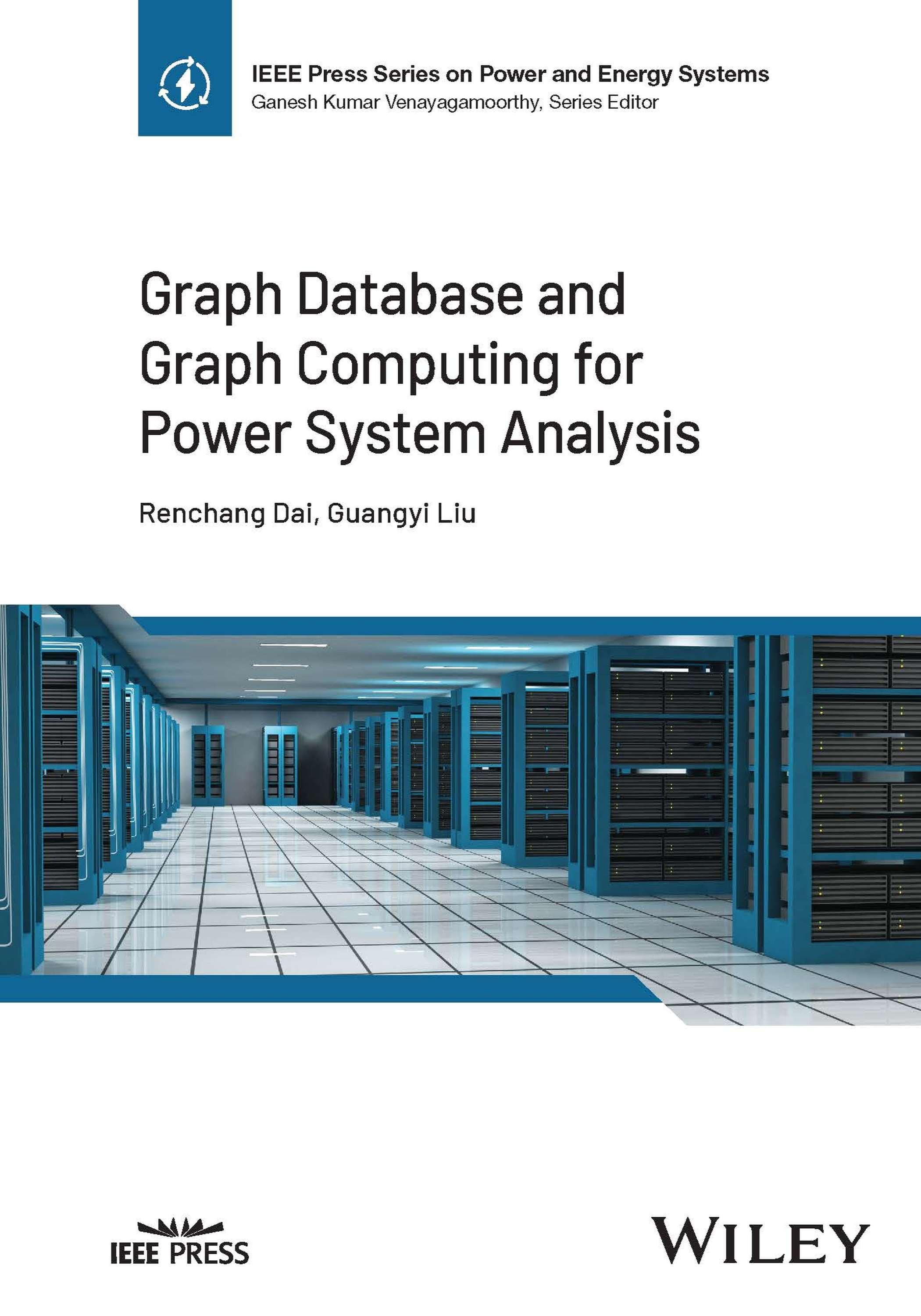
IEEEPress
445HoesLane Piscataway,NJ08854
IEEEPressEditorialBoard
SarahSpurgeon, EditorinChief
JónAtliBenediktssonBehzadRazaviJeffreyReed AnjanBoseJimLykeDiomidisSpinellis
JamesDuncanHaiLiAdamDrobot AminMoenessBrianJohnsonTomRobertazzi DesineniSubbaramNaiduAhmetMuratTekalp
GraphDatabaseandGraphComputing forPowerSystemAnalysis
RenchangDai
PugetSoundEnergy Bellevue,WA,USA
GuangyiLiu
EnvisionDigital SanJose,CA,USA
IEEE Press Series on Power and Energy Systems Ganesh Kumar Venayagamoorthy, Series Editor
Copyright©2024byTheInstituteofElectricalandElectronicsEngineers,Inc.Allrightsreserved.
PublishedbyJohnWiley&Sons,Inc.,Hoboken,NewJersey. PublishedsimultaneouslyinCanada.
Nopartofthispublicationmaybereproduced,storedinaretrievalsystem,ortransmittedinanyformorbyanymeans, electronic,mechanical,photocopying,recording,scanning,orotherwise,exceptaspermittedunderSection107or 108ofthe1976UnitedStatesCopyrightAct,withouteitherthepriorwrittenpermissionofthePublisher,or authorizationthroughpaymentoftheappropriateper-copyfeetotheCopyrightClearanceCenter,Inc.,222Rosewood Drive,Danvers,MA01923,(978)750-8400,fax(978)750-4470,oronthewebatwww.copyright.com.Requeststothe PublisherforpermissionshouldbeaddressedtothePermissionsDepartment,JohnWiley&Sons,Inc.,111River Street,Hoboken,NJ07030,(201)748-6011,fax(201)748-6008,oronlineathttp://www.wiley.com/go/permission.
Trademarks:WileyandtheWileylogoaretrademarksorregisteredtrademarksofJohnWiley&Sons,Inc.and/orits affiliatesintheUnitedStatesandothercountriesandmaynotbeusedwithoutwrittenpermission.Allother trademarksarethepropertyoftheirrespectiveowners.JohnWiley&Sons,Inc.isnotassociatedwithanyproductor vendormentionedinthisbook.
LimitofLiability/DisclaimerofWarranty:Whilethepublisherandauthorhaveusedtheirbesteffortsinpreparingthis book,theymakenorepresentationsorwarrantieswithrespecttotheaccuracyorcompletenessofthecontentsof thisbookandspecificallydisclaimanyimpliedwarrantiesofmerchantabilityorfitnessforaparticularpurpose. Nowarrantymaybecreatedorextendedbysalesrepresentativesorwrittensalesmaterials.Theadviceandstrategies containedhereinmaynotbesuitableforyoursituation.Youshouldconsultwithaprofessionalwhereappropriate. Further,readersshouldbeawarethatwebsiteslistedinthisworkmayhavechangedordisappearedbetween whenthisworkwaswrittenandwhenitisread.Neitherthepublishernorauthorsshallbeliableforanylossofprofitor anyothercommercialdamages,includingbutnotlimitedtospecial,incidental,consequential,orotherdamages.
Forgeneralinformationonourotherproductsandservicesorfortechnicalsupport,pleasecontactourCustomerCare DepartmentwithintheUnitedStatesat(800)762-2974,outsidetheUnitedStatesat(317)572-3993orfax(317) 572-4002.
Wileyalsopublishesitsbooksinavarietyofelectronicformats.Somecontentthatappearsinprintmaynotbe availableinelectronicformats.FormoreinformationaboutWileyproducts,visitourwebsiteatwww.wiley.com.
LibraryofCongressCataloging-in-PublicationData:
Names:Dai,Renchang,author.|Liu,Guangyi(Scientist),author.
Title:Graphdatabaseandgraphcomputingforpowersystemanalysis/ RenchangDai,GuangyiLiu.
Description:Hoboken,NewJersey:Wiley-IEEEPress,[2024]|Includes index.
Identifiers:LCCN2023023393(print)|LCCN2023023394(ebook)|ISBN 9781119903864(cloth)|ISBN9781119903871(adobepdf)|ISBN 9781119903888(epub)
Subjects:LCSH:Graphdatabases.|Electricpowersystems.
Classification:LCCQA76.9.D32D332024(print)|LCCQA76.9.D32(ebook) |DDC005.75/8–dc23/eng/20230602
LCrecordavailableathttps://lccn.loc.gov/2023023393
LCebookrecordavailableathttps://lccn.loc.gov/2023023394
CoverDesign:Wiley
CoverImage:©AlejandroMendozaR/Shutterstock
Setin9.5/12.5ptSTIXTwoTextbyStraive,Pondicherry,India
Contents
AbouttheAuthors xiii
Preface xv Acknowledgments xvii
PartITheoryandApproaches 1
1Introduction 3
1.1PowerSystemAnalysis 6
1.1.1PowerFlowCalculation 6
1.1.2StateEstimation 6
1.1.3ContingencyAnalysis 7
1.1.4Security-ConstrainedAutomaticGenerationControl 7
1.1.5Security-ConstrainedED 8
1.1.6ElectromechanicalTransientSimulation 9
1.1.7PhotovoltaicPowerGenerationForecast 10
1.2MathematicalModel 10
1.2.1DirectMethodsofSolvingLarge-ScaleLinearEquations 10
1.2.2IterativeMethodsofSolvingLarge-ScaleLinearEquations 11
1.2.3High-DimensionalDifferentialEquations 11
1.2.4MixedInteger-ProgrammingProblems 11
1.3GraphComputing 12
1.3.1GraphModelingBasics 13
1.3.2GraphParallelComputing 14 References 14
2GraphDatabase 17
2.1DatabaseManagementSystemsHistory 17
2.2GraphDatabaseTheoryandMethod 18
2.2.1GraphDatabasePrincipleandConcept 18
2.2.1.1DefiningaGraphSchema 19
2.2.1.2CreatingaLoadingJob 20
2.2.1.3GraphQueryLanguage 21
2.2.2SystemArchitecture 25
2.2.3GraphComputingPlatform 25
2.3GraphDatabaseOperationsandPerformance 26
2.3.1GraphDatabaseManagementSystem 26
2.3.1.1ParallelProcessingbyMapReduce 27
2.3.1.2GraphPartition 29
2.3.2GraphDatabasePerformance 35 References 38
3GraphParallelComputing 41
3.1GraphParallelComputingMechanism 41
3.2GraphNodalParallelComputing 44
3.3GraphHierarchicalParallelComputing 46
3.3.1SymbolicFactorization 47
3.3.2EliminationTree 51
3.3.3NodePartition 56
3.3.4NumericalFactorization 57
3.3.5ForwardandBackwardSubstitution 58 References 59
4Large-ScaleAlgebraicEquations 61
4.1IterativeMethodsofSolvingNonlinearEquations 61
4.1.1Gauss–SeidelMethod 61
4.1.2PageRankAlgorithm 62
4.1.2.1PageRankAlgorithmMechanism 63
4.1.2.2IterativeMethod 66
4.1.2.3AlgebraicMethod 67
4.1.2.4ConvergenceAnalysis 69
4.1.3Newton–RaphsonMethod 72
4.2DirectMethodsofSolvingLinearEquations 75
4.2.1Introduction 75
4.2.2BasicConcepts 76
4.2.2.1DataStructuresofSparseMatrix 76
4.2.2.2MatricesandGraphs 78
4.2.3HistoricalDevelopment 80
4.2.4DirectMethods 81
4.2.4.1SolvingTriangularSystems 81
4.2.4.2SymbolicFactorization 82
4.2.4.3Fill-ReducingOrdering 82
4.3IndirectMethodsofSolvingLinearEquations 83
4.3.1StationaryMethods 83
4.3.1.1JacobiMethod 83
4.3.1.2Gauss–SeidelMethod 85
4.3.1.3SORMethod 86
4.3.1.4SSORMethod 86
4.3.2NonstationaryMethods 88
4.3.2.1CGMethod 88
4.3.2.2GMRES 89
4.3.2.3BCG(bi-CG) 90 References 91
5High-DimensionalDifferentialEquations 95
5.1IntegrationMethods 95
5.1.1AnOverviewofIntegrationMethodsandtheirAccuracy 95
5.1.1.1One-StepMethods 96
5.1.1.2LinearMultistepMethods 99
5.1.2IntegrationMethodsforPowerSystemTransientSimulations 100
5.1.3TransientAnalysisAccuracy 100
5.1.4TransientAnalysisStability 101
5.1.4.1AbsoluteStability 101
5.1.4.2StiffStability 102
5.2TimeStepControl 103
5.2.1AdaptiveTimeStep 104
5.2.1.1ChangebyIterationNumber 105
5.2.1.2ChangebyEstimatedTruncationError 105
5.2.1.3ChangebyStateVariableDerivative 106
5.2.2MultipleTimeStep 106
5.2.3BreakPoints 109
5.3InitialOperationCondition 110
5.4Graph-BasedTransientParallelSimulation 115
5.5NumericalCaseStudy 117
5.6Summary 123 References 124
6OptimizationProblems 125
6.1OptimizationTheory 125
6.2LinearProgramming 125
6.2.1TheSimplexMethod 127
6.2.1.1BasicFeasibleSolution 127
6.2.1.2TheSimplexIteration 128
6.2.2Interior-PointMethods 132
6.3NonlinearProgramming 138
6.3.1UnconstrainedOptimizationApproaches 139
6.3.1.1LineSearch 140
6.3.1.2TrustRegionOptimization 141
6.3.1.3Quasi-NewtonMethod 141
6.3.1.4DoubleDoglegOptimization 142
6.3.1.5ConjugateGradientOptimization 143
6.3.2ConstrainedOptimizationApproaches 145
6.3.2.1Karush–Kuhn–TuckerConditions 145
6.3.2.2LinearApproximationsofNonlinearProgrammingwithLinearConstraints 145
6.3.2.3LinearApproximationsofNonlinearProgrammingwithNonlinearConstraints 147
6.4MixedIntegerOptimizationApproach 147
6.4.1Branch-and-BoundApproach 148
6.4.2MachineLearningforBranching 150
6.5OptimizationProblemsSolutionbyGraphParallelComputing 151
6.5.1SimplexMethodBasedonGraphParallelComputing 151
6.5.2Interior-PointMethodBasedonGraphParallelComputing 154 References 156
7Graph-BasedMachineLearning 159
7.1StateofArtonPVGenerationForecasting 159
7.2GraphMachineLearningModel 160
7.3ConvolutionalGraphAuto-Encoder 162
7.3.1Auto-Encoder 162
7.3.2Auto-EncoderonGraphs 163
7.3.3ProbabilityDistributionFunctionApproximation 164
7.3.4ConvolutionalGraphAuto-Encoder 167
7.3.5GraphFeatureExtractionArtificialNeuralNetwork(R(G)) 169
7.3.6Encoder(Q)andDecoder(P) 170
7.3.7Estimationof P(V ∗ π ) 171
References 171
PartIIImplementationsandApplications 175
8PowerSystemsModeling 177
8.1PowerSystemGraphModeling 177
8.2PhysicalGraphModelandComputingGraphModel 178
8.3Node-BreakerModelandGraphRepresentation 180
8.4Bus-BranchModelandGraphRepresentation 189
8.5Graph-BasedTopologyAnalysis 190
8.5.1Substation-LevelTopologyAnalysis 190
8.5.2System-LevelNetworkTopologyAnalysis 196
References 198
9StateEstimationGraphComputing 199
9.1PowerSystemStateEstimation 199
9.2GraphComputing-BasedStateEstimation 201
9.2.1StateEstimationGraphComputingAlgorithm 201
9.2.1.1BuildNode-BasedStateEstimation 201
9.2.1.2Graph-BasedStateEstimationParallelAlgorithm 203
9.2.2NumericalExample 209
9.2.3Graph-BasedStateEstimationImplementation 215
9.2.3.1Graph-BasedStateEstimationGraphSchema 215
9.2.3.2NodalGainMatrixFormation 216
9.2.3.3BuildRHS 219
9.2.4Graph-BasedStateEstimationComputationEfficiency 220
9.3BadDataDetectionandIdentification 223
9.3.1Chi-SquaresTest 224
9.3.2AdvancedBadDataDetection 224
9.3.3BadDataIdentification 228
9.3.3.1NormalizedResidual 228
9.3.3.2LargestNormalizedResidualforBadDataIdentification 229
9.4Graph-BasedBadDataDetectionImplementation 229 References 231
10PowerFlowGraphComputing 233
10.1PowerFlowMathematicalModel 233
10.2Gauss–SeidelMethod 234
10.3Newton –RaphsonMethod 242
10.3.1BuildJacobianGraph 245
10.3.2Graph-BasedSymbolicFactorization 247
10.3.3Graph-BasedEliminationTreeCreationandNodePartition 249
10.3.4GraphNumericalFactorization 251
10.3.5BuildRight-HandSide 253
10.3.6GraphForwardandBackwardSubstitution 254
10.3.7Graph-BasedNewton–RaphsonPowerFlowCalculation 255
10.4FastDecoupledPowerFlowCalculation 257
10.4.1BuildB_PandB_PPGraphs 259
10.5Ill-ConditionedPowerFlowProblemSolution 261
10.5.1Introduction 261
10.5.2DeterminetheFeasibilityofthePowerFlow 262
10.5.3ProblemFormulationforDeterminingtheFeasibilityofPowerFlow 263
10.5.4PowerFlowFeasibilityVerification 264
10.5.5FindaFeasibleSolutionforthePowerFlowProblem 266 References 271
11ContingencyAnalysisGraphComputing 273
11.1DCPowerFlow 273
11.2BridgeSearch 276
11.3ConjugateGradientforPostcontingencyPowerFlowCalculation 282
11.4ContingencyAnalysisUsingConvolutionalNeuralNetworks 294
11.4.1ConvolutionalNeuralNetwork 295
11.4.2ConvolutionalNeuralNetworkComponents 297
11.4.2.1ConvolutionalNeuralNetworkInput 297
11.4.2.2ConvolutionalNeuralNetworkOutput 297
11.4.2.3ConvolutionalNeuralNetworkConvolutionalLayer 297
11.4.2.4CNNPoolingLayer 298
11.4.2.5CNNFullyConnectedLayer 299
11.4.3EvaluationMetrics 299
11.4.3.1Accuracy 299
11.4.3.2Precision 300
11.4.3.3Recall 300
11.4.4ImplementationofConvolutionalNeuralNetwork 300
11.5ContingencyAnalysisGraphComputingImplementation 302 References 306
12EconomicDispatchandUnitCommitment 309
12.1ClassicEconomicDispatch 309
12.1.1ThermalUnitEconomicDispatch 309
12.1.2HydrothermalPowerGenerationSystemEconomicDispatch 315
12.2Security-ConstrainedEconomicDispatch 320
Contents
12.2.1GenerationShiftFactorMatrix 323
12.2.2Graph-BasedSCEDModeling 325
12.2.3Graph-BasedSCED 327
12.2.3.1BuildupSimplexGraph 328
12.2.3.2Graph-BasedSimplexMethod 331
12.2.3.3UpdatePowerFlow 331
12.2.3.4Graph-BasedSCEDImplementation 333
12.3Security-ConstrainedUnitCommitment 334
12.3.1SCUCModel 334
12.3.2Graph-BasedSCUC 335
12.4NumericalCaseStudy 336
12.4.1Graph-BasedSCEDModeling 336
12.4.2BasicFeasibleSolution 340
12.4.3EconomicDispatchOptimalSolution 342 References 342
13AutomaticGenerationControl 345
13.1ClassicAutomaticGenerationControl 345
13.1.1SpeedGovernorControl 345
13.1.2SpeedDroopFunction 347
13.1.3FrequencySupplementaryControl 353
13.1.4FundamentalsofAutomaticGenerationControl 355
13.2NetworkSecurity-ConstrainedAutomaticGenerationControl 358
13.3Security-ConstrainedAGCGraphComputing 361 References 364
14Small-SignalStability 365
14.1Small-SignalStabilityofaDynamicSystem 365
14.2SystemLinearization 366
14.3Small-SignalStabilityMode 367
14.4Single-MachineInfiniteBusSystem 367
14.4.1ClassicalGeneratorModel 367
14.4.2Third-OrderGeneratorModel 369
14.4.3NumericalCaseStudy 373
14.4.3.1StableCase 373
14.4.3.2InstableCase 376
14.5Small-SignalOscillationStabilization 378
14.6EigenvalueCalculation 379
14.6.1Graph-BasedSmall-SignalStabilityAnalysis 382
14.6.2BuildupSmall-SignalStabilityGraph 383
14.6.3NumericalExample 383 References 388
15TransientStability 391
15.1TransientStabilityTheory 391
15.1.1StabilityRegionandBoundary 391
15.1.2EnergyFunctionMethod 391
15.1.2.1ControllingUEPMethod 392
15.1.2.2Stability-Region-BasedControllingUEPMethod 393
15.2TransientSimulationModel 393
15.2.1GeneratorRotorModel 393
15.2.2GeneratorElectro-MagneticModel 394
15.2.3ExcitationSystemModel 394
15.2.4GovernorModel 396
15.2.5PSSModel 397
15.3TransientSimulationApproach 397
15.3.1TransientSimulationAlgorithm 398
15.3.2Steady-StateEquilibriumCondition 398
15.3.3GeneratorInjectionCurrent 400
15.4TransientSimulationbyGraphParallelComputing 401
15.4.1TransientSimulationGraph 401
15.4.2LoadingDataintoGraph 403
15.4.3Graph-BasedTransientSimulationImplementation 406
15.5NumericalExample 406
15.5.1PowerFlowData 406
15.5.2DynamicData 406
15.5.3PowerFlowResults 409
15.5.4Steady-StateEquilibriumPoint 410
15.5.5GeneratorInjectionCurrentCalculation 415
15.5.6CalculateBusVoltage 416
15.5.7SimulationResults 416 References 421
16Graph-BasedDeepReinforcementLearningonOverloadControl 425
16.1Introduction 425
16.2DDPGAlgorithm 426
16.2.1Terminology 426
16.2.2QFunction 427
16.2.3QValueApproximation 427
16.2.4PolicyGradient 428
16.3BranchOverloadControl 429
16.3.1States 429
16.3.2Actions 430
16.3.3Rewards 430
16.4Graph-BasedDeepReinforcementLearningImplementation 430 References 433
17Conclusions 435 Appendix 437
Index 481
AbouttheAuthors
RenchangDai,PhD, isaconsultingengineerandprojectmanageratPugetSoundEnergy. HereceivedhisPhDdegreeinelectricalengineeringfromTsinghuaUniversity,China,in2001.
Dr.Daihasworkedonavarietyofpowersystemproblems,includingpowersystemplanning, operations,andcontrol.HewastheprincipalengineerandgroupmanagerforGlobalEnergyInterconnectionResearchInstituteNorthAmerica,whereheledateamofengineersinresearchingand developinggraphdatabaseandgraphcomputingtechnologiesforpowersystemplanningand operations.
Dr.DaiwasateamleaderforGEEnergy.InGEEnergy,hedesigned,developed,andimplementedEnergyManagementSystem.HewasalsoafoundingmemberoftheGEEnergyConsulting SmartGridCenterofExcellence,whereheconsultedonsmartgriddeploymentandrenewable energygridintegrationprojects.In2005,whenhewasaleadscientistinGEGlobalResearch, hewasawardedtheGEGlobalTechnicalAwardforhiscontributionstothedevelopmentofwind turbinegeneratorfaultridethroughtechnology.
Dr.DaiisaseniormemberoftheIEEE.Hehasworkedintensivelyongraph-basedpowersystem analysisandhaspublishedover100papersininternationaljournalsandconferences.
GuangyiLiu,PhD, isachiefscientistatEnvisionDigital.Heisleadingateamofengineersto developpowersystemapplicationsoftwarethatisbasedongraphdatabaseandgraphcomputing technologies.HereceivedhisPhDdegreeinelectricalengineeringfromtheChinaElectricPower ResearchInstitute,China,in1990.
Dr.Liuhasworkedonavarietyofpowersystemresearchfields,includingEnergyManagement System(EMS),DistributionManagementSystem(DMS),ElectricityMarket,ActiveDistribution Network,andBigData.HewastheprincipalengineerandchieftechnologyofficerforGlobal EnergyInterconnectionResearchInstituteNorthAmerica,whereheledateamofengineersin researchinganddevelopinggraphdatabaseandgraphcomputingtechnologiesforpowersystem calculation,analysis,andoptimization.
Dr.LiuisaseniormemberoftheIEEEandafellowoftheChineseSocietyofElectrical Engineering.Hehasworkedintensivelyonpowersystemanalysisandoptimization,andhehas publishedover200papersininternationaljournalsandconferences.
Westartedtoworkonpowersystemanalysisdecadesago.Improvingpowersystemanalysis computationefficiencyisanongoingtaskandachallengeforonlineapplicationsandoffline analysesinthepowerindustry.Thetirelessandremarkableeffortshavebeenendeavoredby researchersandengineerstryingtoachievereal-timesteady-state,dynamic,andoptimization applications.Keepingthisambitioninmind,theideaofgraphcomputingwasinspiredatanoccasionalconservationwithProfessorShouchengZhangfromStanfordUniversityin2015whenhe introducedastart-upcompanyandtheirworkongraphdatabasestous.Theperfectmatchofgraph natureandpowernetworkstructuresparkedthelongexplorationandjourneyofresearchingand developinggraphcomputingtheory,algorithms,methods,approaches,andapplicationsforyears. Thisbookisacomprehensivesummaryandknowledgesharingofourresearchandengineering workongraphcomputingforpowersystemanalysis.
Thisbookisdividedintotwoparts.PartIdevotesthefirstsevenchapterstohighlightingthetheoreticalmethodsandapproaches.PartIIiscomposedofChapters8–17onpracticalimplementationsandapplications.PartIservesprerequisitesofgraphcomputingwithbasicsandadvancesof graphdatabases,graphparallelcomputing,andknowledgeofsolvingalgebraicequations,optimizationproblems,differentialequations,andtheircombinations.PartIIprovidesacomprehensive illustrationofgraph-basedpowersystemmodeling,analysisapproaches,andimplementations withdetailedgraphqueryscripts.TheimplementedapplicationspresentedinPartIIcoverpower systemtopologyanalysis,stateestimation,powerflowcalculation,contingencyanalysis,securityconstrainedeconomicdispatch,security-constrainedunitcommitment,automaticgeneration control,small-signalstability,transientstability,anddeepreinforcementlearning.
Currently,thepracticeofpowersystemmodelingfocusesonusingrelationaldatabases.Inrelationaldatabases,dataareorganizedandmanagedintables.Therelationshipsbetweentablesare connectedbyseparatedtablesorbyusingajoinoperationtosearchcommonattributesindifferent tablestofindtherelationships.Inthismechanism,itischallengingtomaintainandmanipulate alargedatasetinarelationaldatabase.
Contrarytotherelationaldatabase,agraphdatabaseusesgraphstructuresforsemanticqueries withnodesandedgestostoredata.Theessentialdifferencesbetweengraphdatabasesandrelationaldatabasesarethattheedgedirectlydefinesthedatarelationshipandgraphdatabasesare designedforparallelcomputing.Graphcomputingmodelspowersystemsasagraphwhichisconsistentwiththefactthatpowersystemphysicallyisagraph – busesareconnectedbybranchesasa graph.Thegraphdatastructuretellsthetopologyofthepowernetworkandtherelationsofpower systemcomponentsnaturally.Thegraphcomputingmechanismbyusingqueriesonnodesand graphpartitions,promotesparallelcomputingforpowersystemapplications.
Graphdatabasesarenewtothepowerindustry.Graphcomputingisnoveltoresearchersand engineers.Themainobjectiveofthisbookistoprovidearoadmapandguidancetoreaderstolearn thealternativeandinnovativeapproachestomodelingandsolvingpowersystemproblemsfrom scratch.Forthispurpose,theprocessesofdefiningvertex,edge,andgraphschema,creatingaloadingjob,anddevelopingdetailedgraphqueriesaredemonstrated.Thescriptsforeachpowersystem analysisareprovidedandexplainedindetailtofacilitatereaderstograduallyandcomprehensively mastergraphcomputing.Tomakethisbookareferencetograduatestudents,illustrativeproblems arepresentedandhands-onexperiencesingraphcomputingdesignandprogrammingareprovided bydetailedscripts.
Thegraphcomputingresearchactivitiesarestillprogressing.Webelievethatgraphcomputing hasgreatpotentialinvariouspowersystemanalyses.Wehopethisbookcaninviteandinspire researchersandengineerstostudyandresearchgraphdatabasesandgraphcomputingandapply thegraphcomputingtheoryandapproachestodeveloppowersystemapplications.
Acknowledgments
Thisbookisaresultofthefascinatingjourneyofourstudyandresearchworkfordecades.Wefirstly acknowledgeourresearchadvisors,ProfessorMingDingfromtheHefeiUniversityofTechnology, ProfessorBomingZhangfromTsinghuaUniversity,andProfessorErkengYufromtheChina ElectricPowerResearchInstitute,forusheringusintotheworldofpowersystemanalysisand leadingusintotheresearchareaofpowersystemreal-timeapplications.Theknowledgeand experiencetheysharedwithusalongwiththeiradvice,influenceourresearchtothisday.
Wealsoacknowledgeourresearchteamfortheircontributionsandsupportonthischallenging andrewardingworkformanyyears.AgreatthanksgoestoDr.TingChen,Mr.HongFan,Dr.Chen Yuan,Dr.JingjinWu,Dr.YitingZhao,Dr.JunTan,Dr.JiangpengDai,Dr.YongliZhu,Dr.Longfei Wei,Dr.XiangZhang,Dr.PengWei,Dr.YachenTang,Mr.KewenLiu,Mr.WendongZhu, Mrs.TingtingLiu,Mrs.BowenKan,Mr.HaiyunHan,Mr.LetianTeng,Dr.KaiXie,Mr.Zhiwei Wang,Dr.XiChen,Mrs.ZiyanYao,Dr.WeiFeng,Dr.YijingLiu,Mrs.JingHong,Mr.Huaming Zhang,Dr.SaeedD.Manshadi,Dr.MarianaKamel,Dr.YaweiWang,Mr.YananLyu,andmany othercolleaguesandinterns,fortheircontributionsontheresearchanddevelopmentofthematerialpresentedinthisbookandwonderfulideasaboutthegraphcomputingrelatedresearchtopics.
WearegratefulandthankfultoProfessorFranLifromtheUniversityofTennessee,Knoxville, ProfessorJianhuiWangfromSouthernMethodistUniversity,ProfessorHsiao-DongChiangfrom CornellUniversity,andProfessorYinyuYefromStanfordUniversityforpartneringwithusonthe researchanddevelopmentworkandfantasticdiscussionongraphcomputing.
Lastbutnotleast,wewouldliketothankourfamilies.Weunderstandwritingthismanuscriptis notaneasytaskfromdayone.Therealjourneyisevenharderthanexpected,withunexpected detours.Weexpressourheartfeltthankstothemfortheirsupportandunderstandingoverthepast severalyears.
RenchangDai GuangyiLiu
Introduction
Theelectricalpowersystemhasbeenrevolutionizingoverthedecadesintoahighlyinterconnected, large,andcomplexrenewablesystem.Populationsandeconomicgrowthgloballydemandhigher electricity.Transactionscrossinglargeareasareencouragedtomakemoreeconomicandenvironmentalsenseandresultinlargepowerflowingoverawidearea.High-voltagetransmissiontechnologiesboostedvoltagelevelsto1000kVUltra-High-VoltageAlternating-Current(UHVAC)and ±800kVUltra-High-VoltageDirectCurrent(UHVDC)totransmitpoweroverthousandsofmiles [1].Advancedpowerelectronicdevicesenableflexiblealternatingcurrenttransmissionsystem (FACTS),forinstance,staticvarcompensatorandvoltagesourceconverter-basedSTATCOM, beingadaptedtocontrolpowerflowagilelyandaccuratelyinelectricpowergrids[2,3].
Theacceleratingdecarbonizationofenergy systemspromotedandpromisedworldwide requiresarisingpenetrationlevelofrenewable energy,distributedenergy,andenergystorage makingthepowersystemeverlargeandmorecomplex.Tomakethelarge,complex,and dynamicpowersystemsecureandcost-effective,real-timemonitoring,operating,andcontrol arecrucial.Accurateandfastcalculation,combinedwithintelligentdecisionsonpowersystems ismorevitalthanever,shiftingfromtheanalyticalEnergyManagementSystem(EMS)tothe intelligentEMS[4].
Whilethepowersystemhasbeenevolvingtobebigger,thepowersystemisgettingtobemore intelligent.Inthepowerindustry,thesmartandintelligentgridisdevelopedbasedonthefollowing technologies:bigdata,deeplearning,andhigh-performancecomputing[5,6].Bigdataanddeep learningusuallyinvolveintensivecomputingefforts,thushigh-performancecomputingisthekey tomakingsmartdecisionsontime.Intelligentreal-timeanalysisbasedonmulti-sourcebigdata analysis,deeplearningtechniques,andhigh-performancecomputing,asthetrend,makesthe powersystemadaptiveandpredictivepossible.
Comparedwiththetraditionalgrid,themodernpowersystemisoperatedundermoreuncertaintybecauseoftheintermittentrenewableenergyandpowermarkettransactionsasdescribed above.Intelligentreal-timeanalysisandcalculationneedtoadopttheseuncertaintiesmorequickly toanticipateextremeeventstomakebetterdecisionstimely.Thenaturalreflectionofhuman beingsincomplexoperatingenvironmentsrequiresmoreaccurateandintuitivedatamodels andpowerfulcalculationmethods.Forexample,toprovidepowerfultechnicalsupportforintelligentreal-timeanalysisandcalculation,introducingthelatestnumericalcalculationtechnology intothepowersystempowerflow,stateestimation,contingencyanalysis,security-constrained automaticgenerationcontrol,security-constrainedunitcommitment,andfaster-than-real-time transientsimulationrequirenoveldatastructureandcalculationapproach.Thecurrentdata
processingandcalculationapproachesoftheexistingpowersystemapplicationsfacethefollowing threechallenges:
1)DataManagementandAnalysis:Itisarequirementandchallengetodevelopdataacquisition, processing,andstoragetechnologiesthatcansimultaneouslymeettheneedsofgridonlineanalysisandofflineplanningforconvergedmulti-sourcebigdatasets.
2)MathematicalMethodsandComputation:Itisnecessaryandchallengingtodevelopnewmathematicaltoolsandalgorithmstoachievefaster-than-real-timegridsimulation.
3)ModelsandSimulations:Theparalleldynamicsimulationframeworkofpowersystemsisnot currentlydevelopedenoughtosupportreal-time,wide-areaprotection,andcontrol.
ThetrendsoftheelectricpowersystemarechallengingtheexistingEMSandMarketManagementSystem(MMS)intheircomputationallyintensiveapplications,suchaspowerflow,stateestimation,contingencyanalysis,multi-timepointnetworkanalysis,security-constrainedautomatic generationcontrol,security-constrainedunitcommitment,security-constrainedeconomicdispatch,andfaster-than-real-timetransientsimulation.Next-generationEMS/MMSisrequiredto beevolvingtoaccommodatelargerscale,highercomplex,moreconstrained,anduncertainpower systemswithafasterthanreal-timemannerorevenlook-aheadcapabilitywithfuturesituational awareness[7].
Tomeettheabovechallenges,therequirementsandgoalsofparallelanalyticaltechnologiesand toolsareurgentlyneededtosupportnewdatamanagementtoolsandrapidcomputationalanalysis methods.
Duetotheirefficientdatamanagementandrapidcomputationalanalysiscapabilities,graph databaseandgraphcomputingtechnologiesaregainingmoreandmoreattention.Theyarepromisingtechnologiestoeffectivelysolvetheproblemofbigdatarapidanalysisandprocessing.Inthe fieldofe-commerce,graphcomputingtechnologybasedonagraphdatabaseplaysakeyrolein real-timetradingandreal-timeanalysissuchasanti-moneylaundering,badtransactiondetection, intelligentnavigation,andotherfields.ManyInternetcompanieshavealsodevelopedtheirgraph computingtechnologiesandproducts,suchasPregel,agraphcomputingsystemdevelopedand designedbyGoogle.TheTrinityprojectofMicrosoftResearchisaboutgraphdatabaseandgraph computingprojects.Google’sPregelproductshavebecomeoneoftheindustryexamplesofsuccessfulgraphdatabaseapplications.
Inthefieldofanalysisofpowergrids,usinggraphdatamanagementandcomputationtechnologyisnew.Thisbooksummarizestherecentresearchanddevelopmentachievementsonthistopic. Graphdatabasearchitecturetopowersystemsisfirstintroduced,whichisneededtosupport fine-grainedparallelcomputingtoimprovepowersystemcomputationefficiency.Thetraditional relationaldatabaseisreplacedbyagraphdatabasetomodelpowersystemsandimplement applications.Usingthegraphdatabase,theprogramtosolvelarge-scalealgebraicequations, high-dimensionaldifferentialequations,andoptimizationproblemsisreconfiguredandredesigned toaccommodategraphparallelcomputinginthisbook.Byusinggraphdatabaseandgraphcomputing,thecomputationalmodelcanbeintegratedwiththegridmodel,datastorage,andnumerical calculation,whilemakingfulluseofbigdatatechnologiessuchasmemorycomputing,distributed parallelcomputing,anddecompositionaggregation.Thetechnologyhasthesignificantadvantagesof largescale,highspeed,andhighefficiencyofcomputingdata,andprovidesatechnicalsolutionwith greatpotentialfordatamanagementandanalysisandcalculationofagiantpowergrid.
Withoutfastandaccuratecalculations,atimelyresponsetoreal-timeeventsisimpossibleand thesystemisrunningatrisk.AnalysisoftheNorthAmericanblackoutof14August2003 showsthatdelayedandmissedresponsesarethemainreasonsforthewide-areablackout[8].
Sequence-of-eventsrecordsshowthatthesystemexperiencedtwoandahalfminutesofdisturbancesfromtheinitialeventtothesystemcollapse.Intheinitialcriticalnineseconds,thehundreds ofgeneratorsthattrippedofflinewerenotfullycapturedbytheEMSsystem,sincetheEMSupdate cycle(typicallyinminutes)ismuchlongerthanthecriticaleventsinterval.Clearly,theopportunity totaketimelymeasurestopreventtheblackoutwasmissedandthepossibilityofamoretimely responsewouldhavebeenenhancedbyanEMSwithafastercycletime.
ThetimehascomewhenitiscriticaltoimprovethecomputationefficiencyofEMSapplications toaccommodatemodernpowersystemsthatareofever-increasingsizeandoperationalcomplexity. ThegoaltodayistoprovideacycletimeequivalenttotheSupervisoryControlandDataAcquisition (SCADA)cycletimeorfastertoprovidelook-aheadcapabilitywithfuturesituationalawareness usingforecastedandscheduledinformationofloadforecasting,unitcommitment,andoutage schedule.Theanalyticalprocessingtimeneedstobereducedfromtensofsecondstosubseconds [7].Tomeetthisrequirement,technologiesforthenext-generationofhigh-performanceEMSare beingstudied[9–11].However,thecomputationcapabilitytocompletethecoreEMSapplications, suchasstateestimation,powerflow,andcontingencyanalysisataSCADAsamplingratehasnot yetbeenachieved.
ToachieveEMScomputationcycletimesthatarefasterthantheSCADAsamplingrate,anovel databasearchitecturealongwithfastcomputationalmethodsarepresentedinthisbook.Among thevariouscomputationaltoolsavailabletoimprovecomputationefficiency,parallelcomputing isapromisingtechnology,providingabundantstoragealongwithmultipleprocessingpaths [12,13].In[12],parallelstateestimationusingapreconditionedconjugategradientalgorithm andanorthogonaldecomposition-basedalgorithmisproposed.Theproposedalgorithmcansolve stateestimationproblemsfasterusingparallelcomputing,butitisinfeasibletodealwithalarge conditionnumberofagainmatrix.AlvesandMonticelliin[13]proposedanapproachtosolving contingencyanalysisbyparallelcomputeranddistributednetwork.Toutilizethelinearityofthe powersystemcomponent,currentbalanceequationssubjectedtoKirchhoff’scurrentlawareused tomodelpowerflowproblemsin[14].Theresultshowsareductionincomputationaltimebyover 20%whenusingthecurrentbalanceequations.
Thestate-of-the-artcommunicationtechnologiesandcomputationtechnologiesininformation systemsarebrilliantlyshowingpowersystemengineersatechnicalsolutiontomeasure,monitor, andanalyzeelectricpowersystemswidelyandquickly.However,whentheexponentiallygrowing dataisacquiredatthecontrolcenter,thedatabaseandcomputationengineconsumesalongertime toprocesswhichdeterioratesthecomputationefficiency.Toachieveanalysiswithhighcomputationefficiency,novelsystemarchitecture,andfastcomputationalalgorithmsareneededtoassist operatorstoensureareliable,resilient,secure,andefficientelectricpowergridpromptly.Among thevariouscomputationalalgorithms,parallelcomputingisapromisingtechnologytoimprove computationefficiencytakingadvantageofmoderncomputationtechnology,abundantstorage space,andparallelcapabilityofdatabaseandGPU.Multiple-coreCPUsandGPUsareavailable nowadaysasaffordablehardwareconfigurationstofacilitateparallelcomputing.However,the state-of-artEMS/MMSdoesnoteffectivelyharnessthemulti-threadedparallelizationcapability intheirapplications[12,13]forthereasonofthetraditionalrelationaldatabaseandcomputation algorithmsappliedbyEMS/MMSwerenotdesignedforparallelcomputing.
Toaccommodateparallelcomputing,boththedatabaseandcalculationapproachesfortheEMS/ MMSapplicationsneedtoberedesignedtofitintoaparalleldatabasemanagementsystemand parallelcomputing.Previousworksinvestigatedthefeasibilityofadoptinggraphcomputingon topologyprocessing,stateestimation,powerflowanalysis, “N 1” contingencyanalysis,and security-constrainedeconomicdispatch[15–21].Realizingthatparallelprocessingofthepower
systemapplicationsneededbyreal-timeoperationandlong-termplanningcanbeenhancedbytakingadvantageoftheembeddedgraphcharacteristicsofapowersystem,thisbookhasmarrieda graph-baseddatabasewithgraphcomputingtoachievehighcomputationaleffectivepowersystem analysistoaccommodatetheevolvingpowersystemsandpowermarket.
Toaccommodateparallelcomputing,databaseandmathematicalmodelforpowersystemcalculationneedtoberedesignedtofitintoparalleldatabasemanagement,parallelanalysis,andfast visualization.
Inthisbook,thecriticalpowersystemapplicationsarerevisited.Thecomputationalapproaches involvedintheseapplicationsareintroducedindetail.Theseapproachesareabstractedtobemathematicalproblemsinsolvinglarge-scalealgebraicequations,high-dimensionaldifferentialequations,andmixedintegerlinearoptimizationproblems.Graphdatastructureandgraphparallel computingareintroducedtomodelthepowersystemingraphandsolvetheproblemsinparallel.
1.1PowerSystemAnalysis
1.1.1PowerFlowCalculation
Powerflowcalculationisawell-knownapplicationinpowersystemanalysis.Theintention ofpowerflowcalculationistoobtainbusvoltagemagnitudeandangleinformation.Oncethe voltageinformationisknown,activepowerandreactivepowerflowoneachbranchcanbeanalyticallydetermined.Inmathematics,thepowerflowcalculationmodelisasetofhigh-dimensional nonlinearalgebraicequations.
Thereareseveraldifferentmethodstosolvenonlinearequations.Thewell-knownNewton–RaphsonmethodlinearizesequationsusingaTaylorserieswiththelineartermonly.IndustrygradeEMSalsousestheFast-decoupledpowerflowmethodtoapproximateactiveandreactiveflow equationsbydecouplingvoltagemagnitudeandanglecalculations.Althoughdecoupledpower flowmethodtakesafewmoreiterationsthanNewton–Raphsonmethodtoconverge,eachiteration takesmuchlesstime.Forreactance-dominatedtransmissionnetworks,decoupledpowerflow methodoutperformstheNewton–Raphsonmethodoncomputationefficiency.Thecostisthe approximationonJacobianmatricesbydecoupledpowerflowmethoddeterioratespowerflowconvergence.Usually,inindustry-gradeEMS,decoupledpowerflowmethodisconductedfirst,then Newton–Raphsonmethodsecondifdecoupledpowerflowmethoddiverges.Thisstrategypracticallyprovidessupportingevidenceofitseffectivenessforcontingencyanalysisforalarge-scalesystemwiththousandsofcontingencies.
1.1.2StateEstimation
Thepowersystemstateestimation(SE)isbasedonreal-timetelemetryfromSCADA.Thenetwork topologyconnectionofthepowersystemisdeterminedinreal-time,alongwiththereal-timeoperatingstateofthepowergridwhichformsthebasisoftheonlineanalysissoftware.ItservestomonitorthestateofthegridandenablesEMSstoperformvariousimportantcontrolandplanningtasks suchasestablishingnearreal-timenetworkmodelsforthegrid,optimizingpowerflows,andbad datadetectionandanalysis.
ThereareatleastthreemajoraspectsofthefuturepowergridthatwilldirectlyimpactSE research.First,moreadvancedmeasurementtechnologieslikephasormeasurementunitshave offeredhopefornearreal-timemonitoringofthepowergrid.
1.1PowerSystemAnalysis
Second,newregulationsandmarketpricingcompetitionmayrequireutilitycompaniestoshare moreinformationandmonitorthegridoverlargegeographicalareas.Thiscallsfordistributedcontrol,andhence,distributedSEtofacilitateinterconnection-widecoordinatedmonitoring.
Lastly,tofacilitatesmartgridfeaturessuchasdemandresponseandtwo-waypowerflow,utility companieswillneedtohavemoretimelyandaccuratemodelsfortheirdistributionsystems.This callsforSEatthedistributionlevel,whichplacesmorestringentrequirementsonSEalgorithms.So far,utilitycompanieshavedonelittleinimplementingSEindistributionsystems,eventhoughSE hasbeendeployedextensivelyintransmissionsystemsfordecades.However,astheelectricpower gridbecomessmarter,moredistributionautomationwillbeneededandSEatthedistributionlevel willbecomemoreimportant.Thecontrolmechanisminthedistributionsystemwillmostlikelybe distributedandactiveinnature,andsowillbethecorrespondingSEfunctions.Thisnecessitatesthe developmentofnewdistributedSEalgorithmsthatavailthemselvesofthesubstantiallyincreased numberofreal-timemeasurements.
1.1.3ContingencyAnalysis
Itisachallengeandagoaltooperatealarge-scale,complex,anddynamicpowergridwithsafety andcost-effectiveness.Contingencyanalysisisoneoftheapplicationstosecurepowersystems operatingwithnoviolation.ContingencyanalysisusesbasecasepowerflowdrivenfromSEto assessthesecurityofpowersystemsunderthecontingencyofasingleequipmentoutageandtheir combinations.Contingencyanalysisisusuallyrunningperiodicallyeveryonetotwominutes.
Thecontingencyanalysisisusuallybasedonanonlinepowergridanalysistofigureouttheweak pointandsecurityrisksofthepowergridandissueanalarmwhenthesystemisrunningatrisk.It facilitatesdispatchingoperatorstodealwithpotentialoperationissuesintimetopreventcascading eventsandblackouts.
Contingencyanalysisistime-consumingasitinvolvesalargenumberofcomputationsofACload flow.Toreducethecomputationaltime,anautomaticcontingencyscreeningapproachisbeing adoptedwhichidentifiesandranksonlythoseoutageswhichcausethelimitviolationonpower flowinthelinesorvoltagesonthebuses.Practically,onlyselectedcontingencieswillleadtosevere conditionsinthepowersystem.Therefore,theprocessofidentifyingtheseseverecontingenciesis referredtoascontingencyselectionandthiscanbedonebycalculatingseverityindicesforeach contingency.Thisisimportanttotargetthevulnerablepointinalarge-scalepowersystemnetwork withaminimumtimerequirement.
Thepotentialofartificialneuralnetworksfornonlinearadaptivefilteringandcontrol,theirabilitytopredictsolutionsfrompasttrends,theirenormousdataprocessingcapability,andtheirability toprovidefastresponsesinmappingdatamakethemapromisingtoolfortheirapplicationtopower systems.
Lookingforward,real-timeandintelligenttechnologiesneedtobedevelopedforcontingency analysistopromotealookaheadandpredictivesecurityawareness.Thedevelopmentofbigdata andhigh-performancecomputingtechnologyisthekeytomakingthisgoalpossible.
1.1.4Security-ConstrainedAutomaticGenerationControl
Theautomaticgenerationcontrol(AGC)isusedtobalanceactivepowerandregulatetie-linepower flowwhileminimizingthepowergenerationcost.Inthepresentstateoftheart,theAGCbasepoint isdeterminedbytheeconomicdispatch(ED)andAGCregulatestheareacontrolerrortobezero andcontrolsthetie-linepowerflowtothedesiredcommand.
EDoptimizesgenerationundernetworksecurityconstraints.Therearetwocommonlyused methodsforactiveEDinpowersystems:(i)offlineEDand(ii)onlineED.
OfflineEDcalculatesunitcommitmentanddispatchesunitactivepoweroutputforthenextday orthenextfewdaysinatimeintervalofhoursbasedonthegenerationcapacity,gridnetworkconstraints,aswellastheforecastedload.
SinceofflineEDisbasedonloadforecasting,thegenerationdispatchmaynotaccuratelymeetthe actualload.Theoperatingconditionsofthepowersystemarechanging,andtheactivepoweroutputofthegeneratorsmaydeviatefromthescheduledpowergenerationsetpoint.Therefore,online EDadjuststhegenerationoutputsetbyofflineEDcontinuouslytosatisfythepowersystem’sactual operatingpointinashorttimeinterval(5–15minutes).
Inpractice,foramiddle-scalepowersystem,EDcalculationwithnetworksecurityconstraints takesminutes.DuetotheshortcycleofAGCcontrolconflictingwiththeextensivecomputation effortsofthesecurity-constrainedoptimization,networksecurityconstraintsarenotmodeledin AGCinreal-time.WhenpowersystemoperationchangessignificantlyintheEDcycle,AGCcommandscannotguaranteethatthenetworksecurityconstraintsaresatisfied.
ThepresentstateoftheartassumesthepowersystemoperationpointdoesnotchangesignificantlyenoughbetweentwoEDexecutionstopushtheAGCbasepointdeterminedbyEDtoviolate networksecurityconstraints.Thisassumptionisnotalwaystrueinpowersystemoperations.
Inthecaseofintermittentrenewableenergypenetratedpowersystemsandfast-responsepower electronics-basedgenerationintegratedtransmissionanddistributionpowernetwork,thesystem powerflowhasahighprobabilityofshiftingawayfromthebasepointwhichisoptimizedinthe cycleofED.AGCdoesnotoptimizepowerflowwithinnetworksecurityconstraints.Withthe presentAGCcommand,thepowerflowmayresultinviolations.Thus,theAGCwithoutnetwork securityconstraintspresentsrisksinpowersystemoperation.
WhenSEestimatesviolatedpowerflow,thepresentstateoftheartheuristicallychangesgenerationlimitsofgeneratorsforAGCregulationtoalleviatetheriskofoverflowunderAGCcommand. ThisapproachhasdrawbacksinthatitisheuristicandtheSEexecutioncycleinminute-scalecannotfitintoAGCexecutioninseconds.
Takingadvantageofthehighperformanceofgraphcomputing,thenetworksecurity-constrained AGCispotentiallyachievable.
1.1.5Security-ConstrainedED
Optimizationtheoryisanimportanttoolindecisionscienceandtheanalysisofpowersystemoperation.Insecurity-constrainedED,objectivesaresetasaquantitativemeasureoftheperformanceof thesystemunderstudy,whichcouldbethepowersystemgenerationcost,renewableenergy,ora combinationofquantities.Themainobjectiveistofindvaluesofthevariablesthatoptimizethe objective.Inaddition,thevariablesarerestrictedorconstrainedtomeetphysicallawsandsecurity requirements.Theprocessofidentifyingobjectives,variables,andconstraintsforagivenproblemis knownasmodeling.Oncethemodelhasbeenformulated,anoptimizationalgorithmcanbeused tofinditssolution.
Unconstrainedoptimizationapproachesarethebasisofconstrainedoptimizationalgorithms. Particularly,mostoftheconstrainedoptimizationproblemsinpowersystemoperationcanbe convertedintounconstrainedoptimizationproblems.Themajorunconstrainedoptimization approachesthatareusedinpowersystemoperationarethegradientmethod,linesearch,Lagrange multipliermethod,Newton–Raphsonoptimization,trust-regionoptimization,quasi-Newton method,doubledoglegoptimization,conjugategradientoptimization,andsoon.
Ageneralformulationofconstrainedoptimizationapproachescanbemodeledas:
where Ω = x ci x =0, i ; cj x ≥ 0, j Ι
Linearprogramshavealinearobjectivefunctionandlinearconstraints,whichmayincludeboth equalitiesandinequalities.Thefeasiblesetisapolytope,aconvex,connectedsetwithflat,polygonalfaces.Thecontoursoftheobjectivefunctionareplanar.
Powersystemoperationproblemsarenonlinear.Thus,nonlinearprogramming(NLP)-based techniquescanhandlepowersystemoperationproblemssuchastheoptimalpowerflowproblem andsecurity-constrainedEDwithnonlinearobjectiveandconstraintfunctions.
Thelinearprogrammingmodelsdiscussedabovehavebeencontinuous,inthesensethatdecisionvariablesareallowedtobefractional.However,fractionalsolutionsarenotrealisticinpower systemunitcommitment.Thisproblemiscalledtheinteger-programmingproblem.Itissaidtobea mixedintegerprogramwhensome,butnotall,variablesarerestrictedtobeintegers.
1.1.6ElectromechanicalTransientSimulation
Transientstabilityanalysisassessesthestateofthepowersystemafteraseveredisturbanceusing transientsimulations.Themathematicalmodelfordescribingpowersystemdynamicbehaviorisa nonlineardynamicsystemthatincludeshigh-dimensionalnonlineardifferentialequationsandlargerscalenonlinearalgebraicequations(DAEs).Whenthetimedomainmethodisappliedtopower systemtransientsimulation,differential-algebraicequationsaresolvedbyusingtime-consuming numericalintegrationmethods.Toimprovethecomputationefficiency,thechoiceofaproperstep sizeandparallelcomputingisessential.
Ifthestepsizeistoolarge,theresultwillbecomeinaccurateorevencompletelywrongwhenthe largestepsizeisnotwithintherangeofnumericalstability.Ifthestepsizeistoosmall,thetransient simulationwilltakelongerthannecessarytokeeptheaccuracy.Theadaptivetimestepisasolution thatusesthesmallestpossibletimesteptoobtainanaccurateresult,therebyincreasingthecalculationspeedwhileensuringthecalculationaccuracy.
Ineachtimestep,weneedtosolvehighorderhigh-dimensionaldifferential-algebraicequations. Tofurtherimprovethecomputationefficiency,aparallelcomputingalgorithmhasbeeninvestigatedinpowersystemtransientsimulation.Inthisbook,agraph-basedparallelcomputingmethod isdemonstratedwiththeadaptivetime-stepnumericalintegrationmethod.
Usingthesequentialmethod,ineachiteration,thenetworkequationsaresolvedtoupdatethe networkbusvoltageincludingthegeneratorterminalvoltage.Differentiateequationsusegeneratorterminalbusvoltageasaboundaryconditiontosolvethedynamicstatesofthegenerator, exciter,governor,PowerSystemStabilizer(PSS),andcurrentinjectionsfromgeneratorstonetworks.Theupdatedcurrentinjectionsareappliedtosolvenetworkequationsinthenextiteration untiltheconvergedsolutionisachieved.
Graphcomputingdemonstratedoutperformanceonpowersystemsteady-stateapplications wherethetechnologywillbeusedtosolvealgebraicequationsinthesequentialmethod-basedtransientsimulation.Inthesequentialmethod,sincethedifferentialequationsforeachgenerationsystemareindependentoncetheterminalvoltagesaresolvedbyalgebraicequations,thedifferential equationsetscanbesolvedbygraphparallelcomputingnaturallywhichwillbeaddressedinthis bookindetail.
1.1.7PhotovoltaicPowerGenerationForecast
Inrecentyears,therapidexhaustionoffossilfuelsources,environmentalpollutionconcerns,and theagingofdevelopedpowerplantsareconsideredcrucialglobalconcerns.Asaconsequence, renewableenergyresourcesincludingwindandsolarhavebeenrapidlyintegratedintotheexisting powergrids.Thereliabilityofpowersystemsdependsonthecapabilityofhandlingexpectedand unexpectedchangesanddisturbancesinproductionandconsumptionwhilemaintainingquality andcontinuityofservice.Thevariabilityandstochasticbehaviorofphotovoltaic(PV)powerare causedbyincludingvoltagefluctuations,aswellaslocalpowerqualityandstabilityissues[22]. Hence,accuratephotovoltaicpowergenerationforecastingisrequiredfortheeffectiveoperation ofpowergrids[23].
Thestudiesinsolarirradianceandphotovoltaicpowerforecastingaremainlycategorizedinto threemajorclasses:
1)Thepersistencemodelsseverasabaselinethatassumestheirradiancevaluesatfuturetime stepsareequaltothesamevaluesattheforecastingtime[22].
2)Physicalmodelsemployphysicalprocessestoestimatefuturesolarradiationvaluesusingastronomicalrelationships[24],meteorologicalparameters,andnumericalweatherpredictions (NWPs)[25].
3)Statisticalandartificialintelligencetechniquesestimateorregresssolarirradianceandphotovoltaicpowergeneration[26–32].
Toremovethestrongsmoothnessassumption,increasethegeneralizationcapability,and improvethecomputationefficiency,inthisbook,theproblemofspatio-temporalprobabilisticsolar radiationforecastingispresentedasagraphdistributionlearningproblem.Intheapproach,asetof solarmeasurementsitesinawideareaismodeledasanundirectedgraph,whereeachnoderepresentsasiteandeachedgereflectsthecorrelationbetweenhistoricalsolardataofitscorresponding nodes/sitestomodelthesolarradiationspatio-temporalcharacteristics.
1.2MathematicalModel
Ingeneral,powersystemanalysiscouldbetransformedtosolvealinearsystem Ax = b,differential equations dx dt = fx , t ,and/oroptimizationproblemsmin x Ω fx .Asafundamentalfunction,graph parallelcomputingapproachestosolvethethreetypicalmathematicalproblemsinvolvedinpower systemanalysis,optimization,andsimulationsarekeycomponentsinthisbook.
1.2.1DirectMethodsofSolvingLarge-ScaleLinearEquations
Directmethodsarewidelyusedtosolvelinearequationsbyafinitesequenceofoperations.Inthe absenceofroundingerrors,directmethodswoulddeliveranexactsolution.Besidestheirhighefficiencytosolvemoderate-sizelinearsystems,directmethodsarealsopopulartosolvelargesparse linearsystems,likepowerflow,SE,andotherpowersystemproblems.Sparsedirectmethodsarea tightlycoupledcombinationoftechniquesfromnumericallinearalgebra,graphtheory,graphalgorithms,permutations,andothertopicsindiscretemathematics[33].Andsuchproblemhasbeen extensivelystudied.
Thisbookfocusesondirectmethodsforsparselinearsystems,suchaslower–upper(LU),Cholesky,andotherfactorization,andtheimplementationbygraphparallelcomputing.Itfirst
